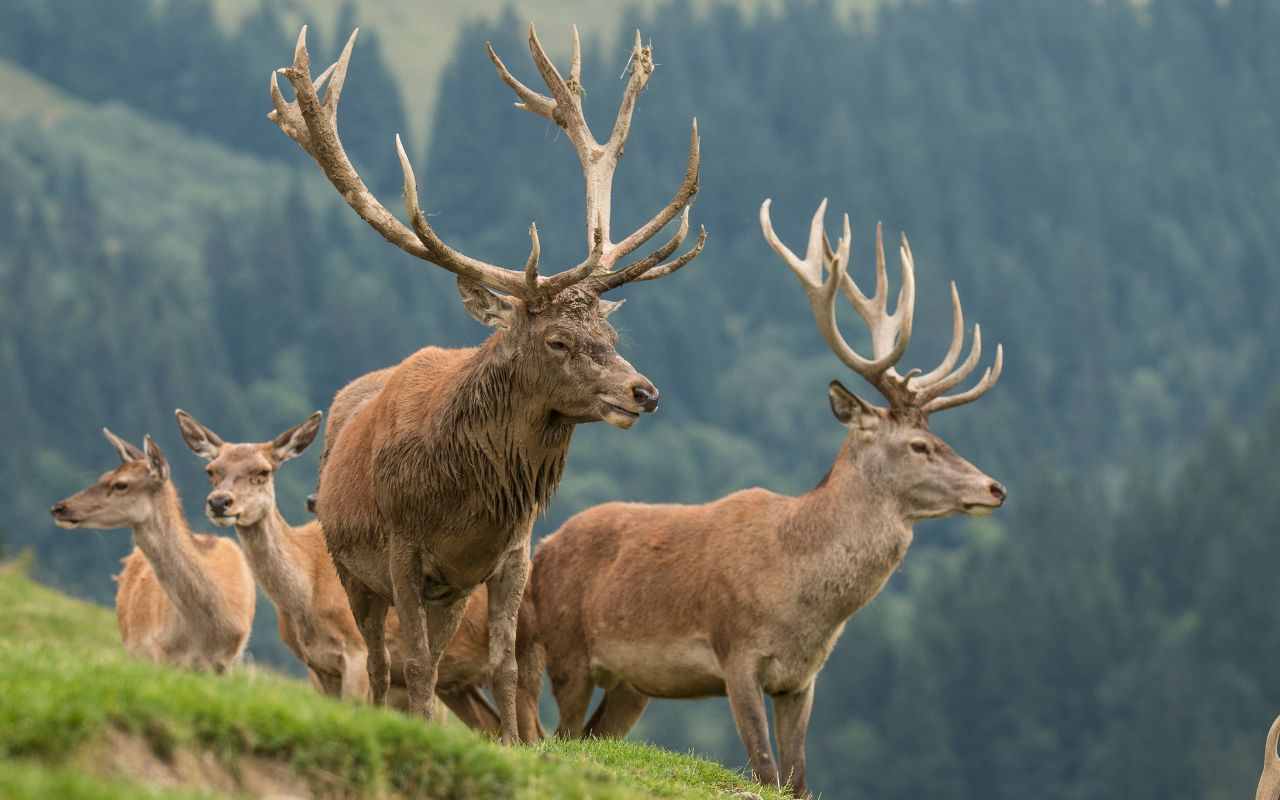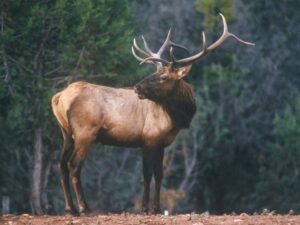Introduction
Embarking on a hunting expedition is a revered tradition across the United States, blending the spirit of conservation with the thrill of the sport. This guide delves deep into the fabric of U.S. hunting seasons, offering an unmatched detailed analysis state by state, species by species. Aimed at both the novice and the seasoned hunter, this resource is designed to navigate the complex landscape of legal, ethical, and conservation-oriented hunting practices.
Conservation, Ethics, and the Law: The Pillars of Hunting
The Importance of Hunting Seasons
Hunting seasons are meticulously crafted by wildlife biologists and conservationists to ensure the sustainability of species and ecosystems. This section explores the scientific rationale behind season timings, emphasizing their role in maintaining ecological balance and promoting biodiversity.
Legalities and Ethical Hunting
Understanding and adhering to hunting regulations are paramount. This segment highlights the necessity of following state-specific laws, including licensing, bag limits, and permissible weapons, underscoring the hunter’s role in conservation ethics.
A State-by-State Exploration of Hunting Seasons: In-Depth Focus:

Alabama: A Hunter’s Haven
- White-tailed Deer: The cornerstone of Alabama hunting, with a season extending from October 15 to February 10, varying by zone.
- Wild Turkey: Spring season from March 20 to April 30, showcasing Alabama’s commitment to turkey conservation.
- Fact: Alabama is unique for its extended deer season in certain zones, adapting to the state’s diverse habitats and deer populations.

Alaska: The Last Frontier
- Moose: With seasons running from September 1 to September 25 in most areas, Alaska offers some of the most challenging moose hunting.
- Caribou: Offering a wide range of dates, from August 10 to March 31, reflecting the vast migrations across Alaskan tundra.
- Fact: Alaska permits hunting under the subsistence hunting regulations, allowing for year-round hunting of certain species in designated areas.

Arizona: The Desert Bounty
- White-tailed Deer: Arizona’s diverse terrain hosts a unique deer season, typically from late September to mid-December, varying by region.
- Elk: One of the most sought-after hunts in Arizona, elk seasons can range from early September to late December, depending on the method of take and unit.
- Fact: Arizona is renowned for its trophy elk hunting, offering some of the largest elk specimens in North America due to careful wildlife management and conservation practices.

Arkansas: The Duck Capital
- White-tailed Deer: Arkansas offers generous deer hunting seasons from September 24 to February 28, including archery, muzzleloader, and modern gun seasons.
- Ducks: With its famed duck season running from late November to late January, Arkansas is a premier destination for waterfowl hunters, thanks to its pivotal location in the Mississippi Flyway.
- Fact: Arkansas’s Bayou Meto Wildlife Management Area is among the most revered waterfowl hunting grounds in the world, drawing thousands of hunters each season.
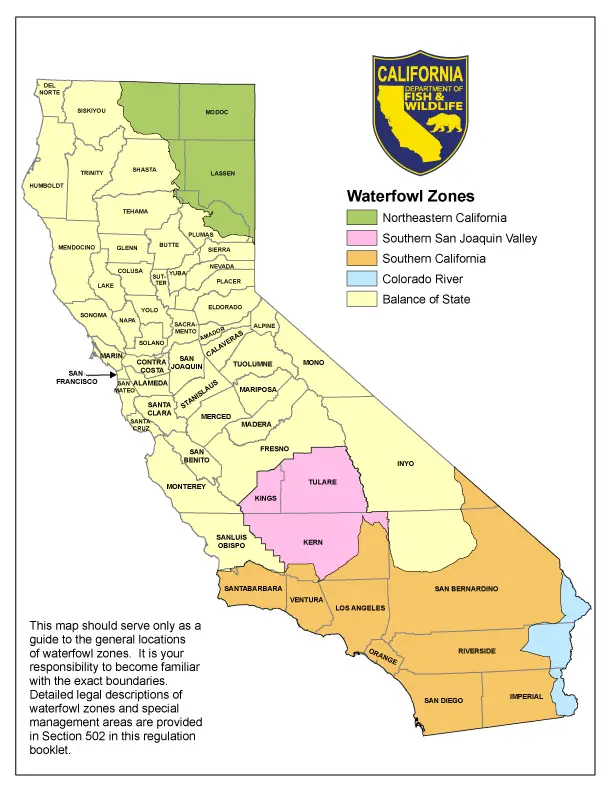
California: A Diverse Hunting Ground
- Black-tailed Deer: California’s hunting seasons for black-tailed deer run from late August to early December, varying greatly by zone.
- Wild Turkey: Spring turkey season spans from late March to early May, with an additional fall season in select areas.
- Fact: California offers one of the most diverse sets of hunting opportunities in the U.S., from coastal black-tailed deer to Sierra Nevada bighorn sheep, reflecting the state’s vast ecological variety.
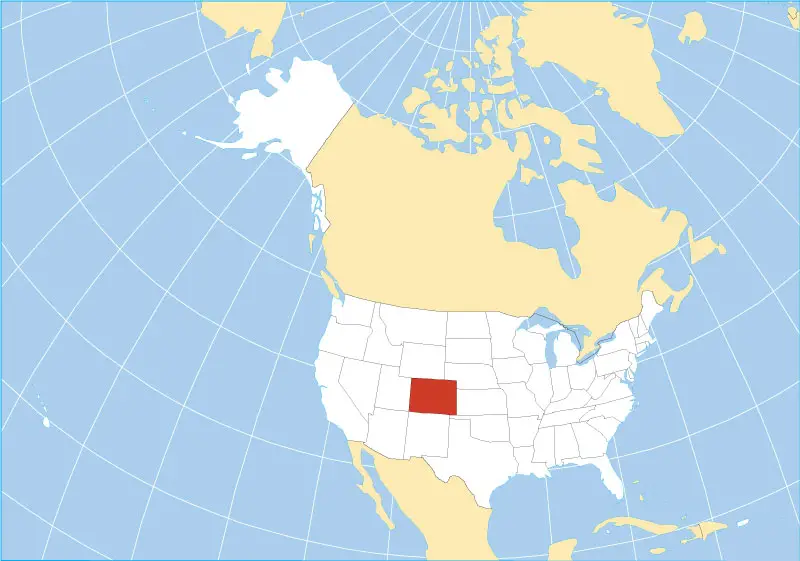
Colorado: The Rocky Mountain Range
- Elk: The centerpiece of Colorado hunting, elk seasons range from late August through early November, with different periods for archery, muzzleloading, and rifle.
- Mule Deer: Seasons for mule deer hunting in Colorado extend from mid-September to late November, depending on the hunting method.
- Fact: Colorado is home to the largest elk herd in the world, with a population well managed through hunter participation and conservation efforts.

Connecticut: New England’s Hunting Charm
- White-tailed Deer: With a variety of landscapes, Connecticut offers deer hunting from September 15 to January 31, including special late seasons in specific zones.
- Turkey: Reflecting New England’s rich turkey hunting traditions, Connecticut’s spring season runs from April 27 to May 29, with a fall archery season in select areas.
- Fact: Connecticut’s management of deer populations in suburban areas showcases innovative approaches to wildlife management, balancing human and ecological needs.
Delaware: The Small Wonder
- White-tailed Deer: Delaware offers a lengthy deer season from September through January, accommodating archery, muzzleloader, and shotgun hunters.
- Waterfowl: Positioned along major flyways, Delaware provides robust duck and geese seasons, generally from October to January.
- Fact: Despite its size, Delaware has a significant deer population, leading to liberal bag limits to ensure proper herd management.

Florida: The Sunshine State
- White-tailed Deer: In Florida, deer season dates vary widely by zone, starting as early as July in the south and extending through March in the north.
- Wild Turkey: Offers unique opportunities for Osceola (Florida) turkeys, with spring seasons typically running from March to April.
- Fact: Florida is the only place in the world where hunters can pursue the Osceola turkey, a subspecies of the wild turkey unique to the state.
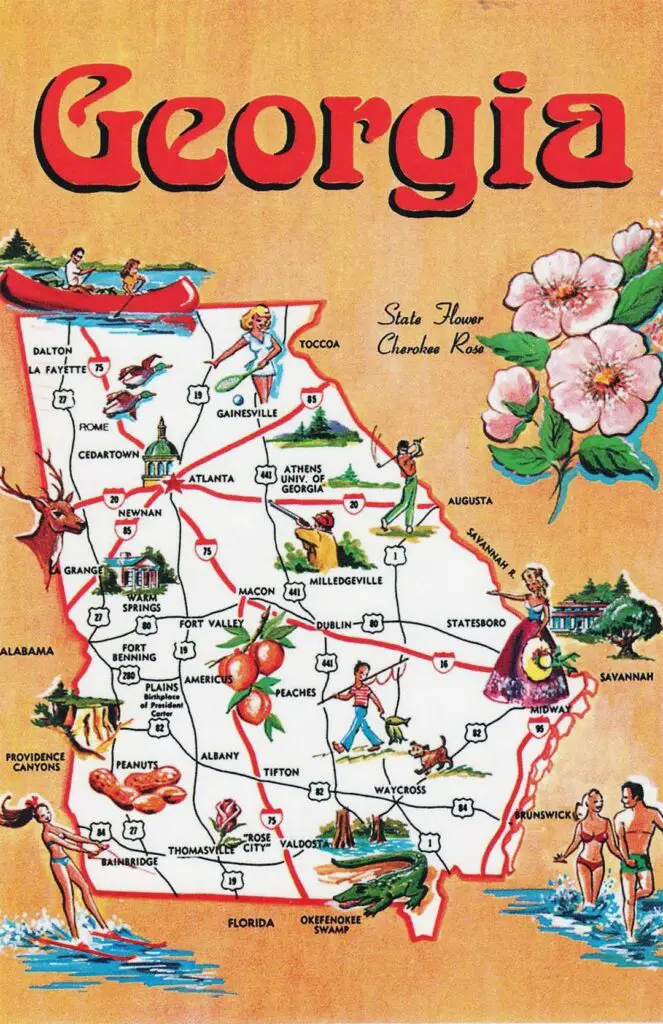
Georgia: The Peach State
- White-tailed Deer: Georgia’s deer season spans from September to January, featuring extended archery-only zones.
- Wild Turkey: The state boasts a generous turkey season from late March to mid-May, reflecting its healthy turkey populations.
- Fact: Georgia’s wildlife management areas provide excellent public land hunting opportunities, funded by hunting license sales and federal excise taxes on hunting equipment.

Hawaii: The Aloha State
- Feral Pigs: Year-round hunting opportunities exist for feral pigs, a popular game animal across the islands.
- Axis Deer: On islands like Lanai and Maui, axis deer hunting is a unique draw, with seasons varying by island and hunting method.
- Fact: Hawaii offers some of the most exotic hunting in the U.S., including game birds like pheasants and francolins, introduced for hunting purposes.
Idaho: The Gem State
- Elk: With one of the longest elk seasons, Idaho offers various periods from August through December, dependent on region and method.
- Mule Deer: Season dates range from August to December, with controlled hunts offering additional opportunities.
- Fact: Idaho’s vast public lands, including national forests and BLM lands, provide hunters with extensive access to prime elk and deer habitats.
Illinois: The Prairie State
- White-tailed Deer: Illinois is renowned for its trophy deer, with seasons from October to January, including firearm, archery, and muzzleloader seasons.
- Wild Turkey: Spring turkey hunting is popular, running from April to May, with fall seasons in select counties.
- Fact: Illinois’ management strategies for white-tailed deer are focused on maintaining a balanced herd, promoting both recreational hunting and ecosystem health.
Indiana: Crossroads of America
- White-tailed Deer: Indiana offers a broad range of deer hunting seasons, starting with archery in October and concluding with late archery and firearms seasons in January.
- Wild Turkey: The spring turkey season, a highlight for many hunters, typically runs from late April to early May, with a fall archery season as well.
- Fact: Indiana’s CheckIN Game system simplifies the process of reporting harvested game, contributing to wildlife management efforts and helping to track population health.
Iowa: The Hawkeye State
- White-tailed Deer: Iowa is famous for its trophy deer, with seasons including early and late muzzleloader, archery, and shotgun from October to December.
- Wild Turkey: Hunters enjoy both a spring and a fall season for turkey, with specific dates varying by zone.
- Fact: Iowa’s preference point system for deer tags helps manage hunter numbers and ensures quality hunting experiences, maintaining the state’s reputation for large white-tailed deer.
Kansas: The Sunflower State
- White-tailed Deer: With a mix of rifle, muzzleloader, and archery seasons from September through December, Kansas offers prime deer hunting.
- Pheasant: Opening in November, pheasant season is a major draw, reflecting Kansas’s status as a top destination for upland bird hunting.
- Fact: Kansas’s Walk-In Hunting Access program provides public access to private land, greatly expanding opportunities for hunters to pursue game.
Kentucky: The Bluegrass State
- Elk: Offering one of the most coveted elk hunts east of the Rocky Mountains, Kentucky’s elk season runs from September to December, with various permits allocated through a lottery.
- White-tailed Deer: Kentucky hunters enjoy a lengthy deer season from September to January, including modern gun, archery, and crossbow seasons.
- Fact: Kentucky’s successful elk restoration program has grown from a few relocated animals to a thriving population, now supporting a sustainable hunting season.
Louisiana: The Pelican State
- White-tailed Deer: Louisiana’s deer seasons vary by region, running from September in the Archery areas to February in the still hunt areas.
- Waterfowl: As a crucial habitat for migratory birds, Louisiana offers extensive duck and geese seasons, typically from November to January.
- Fact: Louisiana’s unique geography, including the Mississippi Alluvial Valley and coastal marshes, supports a rich diversity of game species, making it a favorite among waterfowl hunters.
Maine: The Pine Tree State
- Moose: Highly regulated through a lottery draw, moose hunting season in Maine is a bucket-list experience for many, occurring in September and October.
- Black Bear: With seasons that include bait, dogs, and trapping, Maine’s bear hunting from August to November is among the most versatile in the Northeast.
- Fact: Maine’s extensive public lands, including over 600,000 acres in the North Maine Woods, offer abundant hunting opportunities in some of the country’s most scenic wilderness.
Montana: Big Sky Country
- Key Game Species: Elk, Mule Deer, Antelope, and Pheasant
- Hunting Seasons:
- Elk: General seasons run from late October to late November, with special archery seasons starting in early September.
- Mule Deer: Similar to elk, with both archery and general seasons. Special permits required for certain management areas.
- Antelope: Archery season begins in early August, with the general season following in October.
- Pheasant: Opens in early October, continuing through the first of the year in some regions.
- Fact: Montana is one of the few states that offers a “Block Management Program,” providing hunters with free access to millions of acres of private land, fostering a unique partnership between landowners, hunters, and the Montana Fish, Wildlife & Parks.
Nebraska: The Cornhusker State
- Key Game Species: White-tailed Deer, Mule Deer, Wild Turkey, Pheasant
- Hunting Seasons:
- White-tailed Deer & Mule Deer: Archery season runs from September 1 through December 31, with firearm season typically in November.
- Wild Turkey: Offers both a spring season from April 17 to May 31 and a fall season from September 15 to January 31.
- Pheasant: The season starts in late October and runs through the end of January.
- Fact: Nebraska’s unique Public Access Atlas provides hunters with information on hundreds of thousands of acres of land open to public hunting, including walk-in access areas, wildlife management areas, and other public lands.
Nevada: The Silver State
- Key Game Species: Mule Deer, Elk, Pronghorn Antelope, Chukar
- Hunting Seasons:
- Mule Deer: Seasons vary by area, with archery in August and rifle hunts from early October to early November.
- Elk: Depending on the area and weapon, seasons can range from early August to late December.
- Pronghorn Antelope: Generally, seasons start in August for archery and extend into September for rifle hunts.
- Chukar: Mid-September to early February, offering long seasons for upland bird hunters.
- Fact: Nevada operates a bonus point system for tag allocation in big game draws, helping to manage hunter pressure and game populations sustainably.
New Hampshire: The Granite State
- Key Game Species: White-tailed Deer, Moose, Wild Turkey, Waterfowl
- Hunting Seasons:
- White-tailed Deer: Archery season begins September 15, with firearm season in November.
- Moose: The moose season is by lottery only, typically occurring in October for a limited number of permits.
- Wild Turkey: Spring gobbler season runs from May 3 to May 31, with a fall archery season from September 15 to December 15.
- Waterfowl: Seasons vary by zone, with most starting in early October.
- Fact: New Hampshire offers a unique apprentice hunting license program, allowing new hunters to try hunting under the guidance of an experienced mentor without completing a hunter education course first.
New Jersey: The Garden State
- Key Game Species: White-tailed Deer, Wild Turkey, Waterfowl, Small Game
- Hunting Seasons:
- White-tailed Deer: Offers a variety of seasons including September archery, October firearm for antlerless deer, and the regular firearm season in December.
- Wild Turkey: Spring season runs from late April to late May, with fall bow and shotgun seasons in select zones.
- Waterfowl: Season dates are zone-dependent, typically opening in October or November.
- Fact: New Jersey’s Division of Fish and Wildlife manages over 350,000 acres of wildlife management areas, providing ample public land hunting opportunities across the state.
New Mexico: The Land of Enchantment
- Key Game Species: Elk, Mule Deer, Antelope, Quail
- Hunting Seasons:
- Elk: Seasons vary by unit but generally run from September to December, including archery, muzzleloader, and rifle hunts.
- Mule Deer: Similar to elk, with archery seasons in September and rifle seasons from October to November.
- Antelope: Primarily in August for rifle hunts, with some areas offering archery in September.
- Quail: Hunting season runs from November to February, offering ample opportunity for upland bird hunters.
- Fact: New Mexico’s draw system for elk and other big game tags is designed to manage populations sustainably while providing equal opportunity for resident and non-resident hunters.
New York: The Empire State
- Key Game Species: White-tailed Deer, Black Bear, Wild Turkey, Waterfowl
- Hunting Seasons:
- White-tailed Deer: Archery season starts in October, with regular firearms season opening in November across most of the state.
- Black Bear: Seasons coincide with deer hunting in many regions, offering additional big game hunting opportunities.
- Wild Turkey: Spring season from May 1-31 and a fall season that varies by region.
- Waterfowl: Season dates set within the framework of federal guidelines, typically starting in October.
- Fact: New York’s diverse habitats, from Adirondack Mountains to agricultural lands, support a rich variety of game species, making it a unique hunting destination in the Northeast.
North Carolina: The Tar Heel State
- Key Game Species: White-tailed Deer, Wild Turkey, Waterfowl, Small Game
- Hunting Seasons:
- White-tailed Deer: With a generous season running from September to January, including archery, muzzleloader, and rifle.
- Wild Turkey: Spring season in April and May, with a fall season in October for certain zones.
- Waterfowl: Follows federal guidelines with seasons typically starting in October.
- Fact: North Carolina offers a “Hunting Heritage Apprentice Permit,” allowing newcomers to go afield with an experienced mentor before completing their hunter education.
North Dakota: The Peace Garden State
- Key Game Species: White-tailed Deer, Mule Deer, Pheasant, Waterfowl
- Hunting Seasons:
- White-tailed and Mule Deer: Archery season begins in early September, with rifle seasons in November.
- Pheasant: Mid-October to early January, attracting hunters from across the nation for its renowned pheasant hunting.
- Waterfowl: Seasonal dates vary by zone, starting in late September.
- Fact: North Dakota’s PLOTS (Private Land Open To Sportsmen) program provides public access to private land, enhancing hunting opportunities across the state.
Ohio: The Buckeye State
- Key Game Species: White-tailed Deer, Wild Turkey, Small Game
- Hunting Seasons:
- White-tailed Deer: Offers a range of seasons from September archery through February, including youth and muzzleloader seasons.
- Wild Turkey: A popular spring turkey season in April and May, with a fall season in select counties.
- Fact: Ohio is known for its trophy white-tailed deer potential, thanks to effective wildlife management practices that maintain a healthy and sustainable deer population.
Oklahoma: The Sooner State
- Key Game Species: White-tailed Deer, Wild Turkey, Waterfowl, Quail
- Hunting Seasons:
- White-tailed Deer: Archery season starts in October, with rifle season in November and muzzleloader in late October to early November.
- Wild Turkey: Spring season from April to May, with specific zones offering fall turkey hunting.
- Waterfowl: Varies by zone, generally from October to January for ducks and geese.
- Fact: Oklahoma offers controlled hunts through a lottery system, providing unique opportunities for hunting in wildlife management areas, state parks, and refuges.
Oregon: The Beaver State
- Key Game Species: Elk, Black-tailed Deer, Roosevelt Elk, Waterfowl
- Hunting Seasons:
- Elk: General rifle seasons in October and November, with archery season in September.
- Black-tailed Deer: Archery season in August and September, with rifle hunting in October.
- Roosevelt Elk: Specific areas open for Roosevelt elk from October to November, prized for their size and antlers.
- Fact: Oregon’s diverse ecosystems, from coastal rainforests to mountain ranges, offer varied hunting experiences and are home to the largest population of Roosevelt elk.
Pennsylvania: The Keystone State
- Key Game Species: White-tailed Deer, Black Bear, Wild Turkey, Small Game
- Hunting Seasons:
- White-tailed Deer: Statewide archery from October to November, with rifle season opening after Thanksgiving into December.
- Black Bear: Seasons for archery, muzzleloader, and rifle spread from October to December, varying by WMU (Wildlife Management Unit).
- Wild Turkey: Spring gobbler season in April to May, with fall turkey hunting varying by WMU.
- Fact: Pennsylvania is one of the top states for hunter participation, with a rich heritage of hunting traditions and substantial contributions to wildlife conservation through hunter-funded programs.
Rhode Island: The Ocean State
- Key Game Species: White-tailed Deer, Wild Turkey, Waterfowl
- Hunting Seasons:
- White-tailed Deer: Archery season begins in September, with shotgun and muzzleloader seasons in December.
- Wild Turkey: Offers a spring season in April and May, with a limited fall season.
- Fact: Despite its small size, Rhode Island provides diverse hunting opportunities, including special archery zones within urban and suburban areas to manage deer populations effectively.
South Carolina: The Palmetto State
- Key Game Species: White-tailed Deer, Wild Turkey, Waterfowl, Dove
- Hunting Seasons:
- White-tailed Deer: Extensive season running from August to January, varying by zone and hunting method.
- Wild Turkey: Spring season from April 1 to May 5, with select WMAs offering fall seasons.
- Dove: Popular dove seasons start in early September, signaling the beginning of the fall hunting season for many South Carolinians.
- Fact: South Carolina’s coastal marshes and inland forests offer a rich biodiversity, making it a favorite among hunters for deer, turkey, and migratory birds.
South Dakota: The Mount Rushmore State
- Key Game Species: Pheasant, White-tailed Deer, Mule Deer, Waterfowl
- Hunting Seasons:
- Pheasant: Mid-October to early January, South Dakota is renowned for its world-class pheasant hunting.
- White-tailed Deer & Mule Deer: Archery season runs from late September to January, with rifle seasons typically in November.
- Waterfowl: Season dates vary by zone but generally run from late September to December.
- Fact: South Dakota’s unique landscape offers abundant habitat for pheasants, making it a top destination for upland bird hunters globally.
Tennessee: The Volunteer State
- Key Game Species: White-tailed Deer, Wild Turkey, Waterfowl, Small Game
- Hunting Seasons:
- White-tailed Deer: Archery season begins in late September, with muzzleloader and rifle seasons following in November and December.
- Wild Turkey: Spring season from early April to mid-May, with select counties offering fall turkey hunting.
- Fact: Tennessee manages over 100 wildlife management areas (WMAs), providing diverse hunting opportunities across the state’s varied terrains.
Texas: The Lone Star State
- Key Game Species: White-tailed Deer, Mule Deer, Wild Turkey, Dove, Waterfowl
- Hunting Seasons:
- White-tailed Deer: General season runs from early November to January, with special youth seasons and managed hunts.
- Mule Deer: Rifle season typically in late November to early December, with specific dates varying by region.
- Wild Turkey: Fall season varies by county, with a spring season generally from late March to early May.
- Fact: Texas offers the Public Hunt System, providing access to hundreds of thousands of acres for hunting, including private lands leased for public hunting.
Utah: The Beehive State
- Key Game Species: Elk, Mule Deer, Antelope, Waterfowl
- Hunting Seasons:
- Elk: Archery season starts in August, with rifle elk hunts from October to November.
- Mule Deer: Various seasons from early September for archery to late October for rifle, depending on the area.
- Antelope: Mainly in August for archery, with rifle hunts in September.
- Fact: Utah’s diverse ecosystems from desert to high mountain terrain offer unique hunting experiences, including high-quality trophy elk and mule deer hunts.
Vermont: The Green Mountain State
- Key Game Species: White-tailed Deer, Moose (limited), Wild Turkey, Waterfowl
- Hunting Seasons:
- White-tailed Deer: Includes a youth hunt weekend in late October, November rifle season, and archery seasons in October and December.
- Moose: Permit-only hunting, with limited issuance for specific zones, typically in October.
- Wild Turkey: Spring season in May and a fall hunt in October.
- Fact: Vermont’s habitat management practices, including selective logging and conservation partnerships, enhance biodiversity and hunting opportunities.
Virginia: The Old Dominion
- Key Game Species: White-tailed Deer, Black Bear, Wild Turkey, Waterfowl
- Hunting Seasons:
- White-tailed Deer: Season spans from early October for archery to January for late archery and firearms.
- Black Bear: Hunting opportunities from October to January, varying by method and region.
- Wild Turkey: Spring gobbler season in April to May, with fall turkey seasons in October and November.
- Fact: Virginia’s varied landscapes from the Appalachian Mountains to coastal plains provide rich habitats for a wide range of game species.
Washington: The Evergreen State
- Key Game Species: Elk, Black-tailed Deer, Mule Deer, Waterfowl
- Hunting Seasons:
- Elk: Early November for modern firearm, with archery and muzzleloader seasons in September and October.
- Black-tailed Deer: Primarily October for modern firearms, with additional archery and muzzleloader seasons.
- Mule Deer: Similar to black-tailed deer, with adjusted dates and zones for habitat considerations.
- Fact: Washington’s diverse climates from coastal rainforests to arid eastern regions support a wide variety of wildlife, making it a unique hunting destination.
West Virginia: The Mountain State
- Key Game Species: White-tailed Deer, Black Bear, Wild Turkey, Small Game
- Hunting Seasons:
- White-tailed Deer: Buck firearms season starts in late November, with antlerless, archery, and muzzleloader seasons providing extended opportunities.
- Black Bear: Offers both a fall and a spring season, depending on the region and method of hunt.
- Wild Turkey: A spring season in April to May and a fall season in October.
- Fact: West Virginia’s rich Appalachian Mountain forests offer some of the most rugged and scenic hunting grounds in the eastern U.S.
Wisconsin: America’s Dairyland
- Key Game Species: White-tailed Deer, Black Bear, Wild Turkey, Waterfowl
- Hunting Seasons:
- White-tailed Deer: Various seasons including a popular nine-day gun season in November, October archery, and a December antlerless hunt.
- Black Bear: Hunting is permit-based with a season typically in September and October.
- Wild Turkey: Six-week spring season starting in mid-April and a fall season in September and October.
- Fact: Wisconsin’s management strategies have successfully maintained one of the largest and healthiest white-tailed deer populations in the country.
Wyoming: The Equality State
- Key Game Species: Elk, Mule Deer, Antelope, Waterfowl
- Hunting Seasons:
- Elk: Seasons vary by area, with archery in September and rifle hunts from October to December.
- Mule Deer: General season from October to November, with special archery dates.
- Antelope: Primarily in October, with some areas opening for archery in August.
- Fact: Wyoming’s wide-open spaces and public lands offer vast hunting territories, making it a premier destination for elk, mule deer, and antelope hunting in the West.
Definition of hunting seasons
Hunting seasons refer to specific time periods during which hunting activities are allowed for certain species of wildlife. These seasons are determined and regulated by federal, state, and local authorities in the United States. The purpose of hunting seasons is to ensure the sustainable management of wildlife populations, promote conservation efforts, and provide recreational opportunities for hunters. Each state has its own set of hunting seasons, which may vary depending on factors such as species population, habitat conditions, and conservation goals. It is important for hunters to be aware of and adhere to the hunting seasons and regulations in their respective states to ensure responsible and ethical hunting practices.

Types of hunting seasons
Types of hunting seasons vary across the United States, with each state implementing its own regulations and restrictions. Generally, hunting seasons are categorized based on the targeted game species and the time of year. Common types of hunting seasons include archery season, firearm season, muzzleloader season, and special seasons for specific game species. These seasons are carefully planned to ensure sustainable hunting practices and to maintain healthy wildlife populations. It is important for hunters to familiarize themselves with the specific hunting seasons in their state and adhere to all laws and regulations to promote responsible hunting.

Factors that determine hunting seasons
Factors that determine hunting seasons can vary from state to state in the United States. These factors typically include the population size and health of the wildlife species, the availability of suitable habitat, and the overall goal of wildlife management. Additionally, considerations such as the impact of hunting on other recreational activities, public safety, and the cultural significance of hunting may also play a role in determining hunting seasons. It is important for hunters to familiarize themselves with the specific hunting regulations and guidelines set by each state to ensure compliance and responsible hunting practices.
Federal Hunting Laws

Licensing and permit requirements
When it comes to seasonal hunting, understanding the licensing and permit requirements is crucial. Each state in the United States has its own set of regulations and guidelines that hunters must adhere to. Before embarking on any hunting trip, it is essential to familiarize yourself with the specific laws of the state you plan to hunt in. This includes obtaining the necessary licenses and permits, which may vary depending on the type of game you wish to pursue and the time of year. Failure to comply with these requirements can result in fines, penalties, and even the suspension of hunting privileges. Therefore, it is important to stay informed and ensure that you are in full compliance with the seasonal hunting laws in the United States.
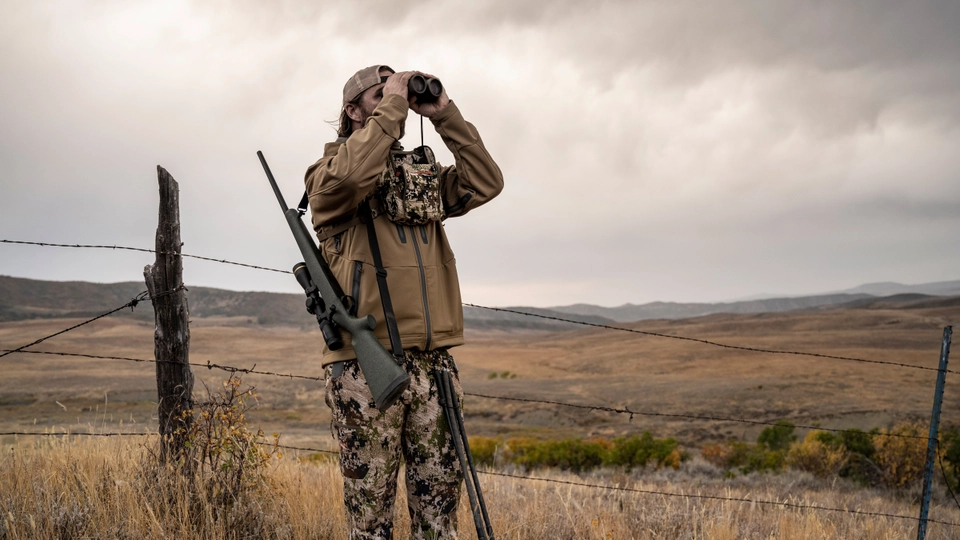
Respecting wildlife and ethical hunting practices
Respecting wildlife and ethical hunting practices are fundamental aspects of seasonal hunting laws in the United States. Hunters are encouraged to have a deep appreciation for the natural world and to engage in responsible hunting practices. This includes following regulations on bag limits, hunting seasons, and designated hunting areas. Additionally, hunters are expected to treat animals with respect and to only take what they need for sustenance or conservation purposes. By adhering to these principles, hunters can contribute to the preservation of wildlife populations and ensure the sustainability of hunting for future generations.

